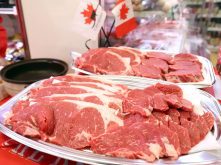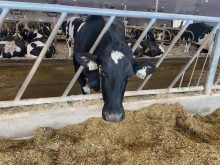Demand for Canadian pork is expected to be strong in 2012, but export sales will be key.
“We expect exports to be relatively stable, hopefully with better prices,” said Canadian Pork Council president Jurgen Preugschas. “We’re always hopeful that our industry doesn’t suffer losses like it has in previous years.”
As of Nov. 1, pork exports totalled 944,328 tonnes, slightly higher than at the same time a year earlier, when exports were at 913,404 tonnes. The biggest gain was in sales to South Korea, which were up 80 per cent to 79,256 tonnes. That country suffered its worst-ever outbreak of foot-and-mouth disease in late 2010 and early 2011, forcing it to slaughter millions of infected pigs and import more foreign pork.
Read Also

Manitoba Ag Days plans star-studded speaker lineup
Dragons’ Den panellist Arlene Dickinson among speaker series highlight for 2026 Manitoba Ag Days in Brandon, alongside slate of agriculture experts.
But with no free trade agreement in place between Canada and South Korea, the Canadian pork industry is fearful of losing a market worth $300 million in annual sales.
“Without a free trade agreement, we would be at a major tariff disadvantage,” said Preugschas.
The U.S., EU and Chile have struck free trade deals with South Korea. For the U.S., that means a 25 per cent tariff on its pork will be totally eliminated by 2016, which would make Canadian pork uncompetitive.
Exports to Russia and China were also up in 2011. Chinese pork imports nearly tripled, rising from 34,235 tonnes as of Nov. 1, 2010 to 99,214 tonnes for the same period in 2011. Russia imports grew by 59 per cent to 117,214 tonnes.
For China, the sudden jump related to inspection issues in that country, which saw Canadian exports shipped via Hong Kong in 2010. As a result, exports to Hong Kong jumped sharply in 2010 and then declined just as sharply in 2011.
However, the increased sales to Russia are the result of a market-development effort.
“I’m confident we’ve gained some good trust with Russia and that our trading relationship will continue to grow,” Preugschas said.
The rise in Canadian exports to Russia in 2011 was caused by high demand for cheaper cuts of meat, mostly for processing.
“Russia spent a fair amount on trimmings and fat,” Preugschas said. “Primarily for sausages.”
Meanwhile, pork imports by Canada were up in 2011, increasing 12 per cent to 205,227 tonnes.
“Canada imports a lot of ribs,” Preugschas said.
Nearly two-thirds of the imports were from the U.S., although Chile more than quadrupled its sales to Canada, selling 9,289 tonnes.
Exports of live hogs to the U.S. rose slightly, to 5.7 million head, in 2011, although exports of barrows, gilts and sows decreased marginally, to just slightly more than one million head.
“Canada continues to face country-of-origin labelling law restrictions in the U.S., and a limited number of U.S. slaughter facilities will take Canadian market hogs,” said Patti Negrave, assistant director of Agriculture and Agri-Food Canada’s red-meat section.
“Given the decline in hog production, Canadian processors are snapping up available market hogs to secure their supply.”














